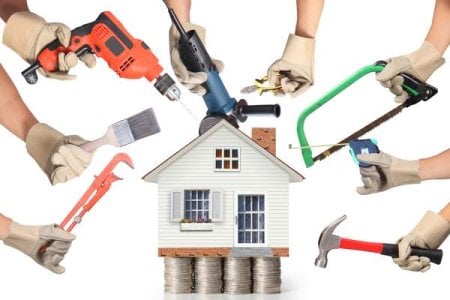Save Money Instantly: Fix These Household Items Instead of Tossing Them - You Won't Believe How Easy It Is!
- Replies 14
In an age where the 'throwaway culture' has become all too common, it's refreshing to know that there are still ways to buck the trend and save money in the process. Before you consider tossing out that wobbly table or the vacuum cleaner that's lost its suck, take a moment to consider the possibility of repair. Not only can this be a cost-effective choice, but it's also a step towards a more sustainable lifestyle.
Let's start with the basics: washers and dryers. These appliances are workhorses in any household, and when they falter, it can feel like a major inconvenience. However, Brendan Norris, the founder of the website Fixable, has seen firsthand how a simple repair can extend the life of these machines. Norris recalls a friend who discarded a perfectly good washing machine over a broken plastic handle – a decision he now knows could have been avoided with a little know-how. Fixable aims to empower people with the skills to tackle such issues, from unclogging machines to replacing valves or internal parts. The community that has sprung up around the site is a testament to the growing interest in self-repair.
When it comes to small electrical goods, the success rate for repairs is surprisingly high. Michael Mink, a repair cafe coordinator, notes that about 60% of items brought in for repair are powered by a plug or battery. From stand mixers needing a clean to appliances with broken cords, many issues can be resolved with some basic electrical knowledge and the right tools. Even cherished items like a Sony Walkman recorder have been brought back to life, preserving not just the device but the memories associated with it.

However, it's not just electronics that can enjoy a second chance. Timber furniture, often seen as disposable when damaged, can be easily fixed with a bit of expertise. Mink shares stories of bed heads and chairs that have been restored at a fraction of the cost of replacement. The repair cafe doesn't just mend items; it also teaches valuable skills to those eager to learn, fostering a community of fixers and DIY enthusiasts.
The list of repairable items doesn't end there. Bikes, broken picture frames, clocks, old camera lenses, and even fairy floss machines have all been given a new lease on life. The latter, a hefty 25kg machine, was fixed using a hidden repair kit found inside the machine itself – a delightful surprise for both the owner and the repairers.
While some items like toasters may be beyond repair once their elements are broken, the majority of household goods can be saved from landfill with a little effort. This not only benefits your wallet but also the environment. Repairing items keeps them off the street and reduces waste, aligning with the growing desire for sustainability.
The rise of repair cafes and online communities like Fixable is a clear indication of a shift in consumer behavior. People are rediscovering the joy and satisfaction that comes from fixing things themselves. There's a wealth of latent knowledge and skills out there, and with new people signing up to learn and participate, the movement is gaining momentum.
 So, the next time you're faced with a broken item in your home, pause and consider the repair option. You might be surprised at how easy and rewarding it can be to breathe new life into something you already own. Not only will you save money, but you'll also contribute to a growing culture of repair and reuse that benefits everyone. Share your repair success stories with us in the comments below – we'd love to hear how you've turned potential trash into treasured possessions!
So, the next time you're faced with a broken item in your home, pause and consider the repair option. You might be surprised at how easy and rewarding it can be to breathe new life into something you already own. Not only will you save money, but you'll also contribute to a growing culture of repair and reuse that benefits everyone. Share your repair success stories with us in the comments below – we'd love to hear how you've turned potential trash into treasured possessions!
Let's start with the basics: washers and dryers. These appliances are workhorses in any household, and when they falter, it can feel like a major inconvenience. However, Brendan Norris, the founder of the website Fixable, has seen firsthand how a simple repair can extend the life of these machines. Norris recalls a friend who discarded a perfectly good washing machine over a broken plastic handle – a decision he now knows could have been avoided with a little know-how. Fixable aims to empower people with the skills to tackle such issues, from unclogging machines to replacing valves or internal parts. The community that has sprung up around the site is a testament to the growing interest in self-repair.
When it comes to small electrical goods, the success rate for repairs is surprisingly high. Michael Mink, a repair cafe coordinator, notes that about 60% of items brought in for repair are powered by a plug or battery. From stand mixers needing a clean to appliances with broken cords, many issues can be resolved with some basic electrical knowledge and the right tools. Even cherished items like a Sony Walkman recorder have been brought back to life, preserving not just the device but the memories associated with it.

Some household items can still be repaired instead of throwing them out and buying a new one, which could save you money. Credit: Shutterstock
However, it's not just electronics that can enjoy a second chance. Timber furniture, often seen as disposable when damaged, can be easily fixed with a bit of expertise. Mink shares stories of bed heads and chairs that have been restored at a fraction of the cost of replacement. The repair cafe doesn't just mend items; it also teaches valuable skills to those eager to learn, fostering a community of fixers and DIY enthusiasts.
The list of repairable items doesn't end there. Bikes, broken picture frames, clocks, old camera lenses, and even fairy floss machines have all been given a new lease on life. The latter, a hefty 25kg machine, was fixed using a hidden repair kit found inside the machine itself – a delightful surprise for both the owner and the repairers.
While some items like toasters may be beyond repair once their elements are broken, the majority of household goods can be saved from landfill with a little effort. This not only benefits your wallet but also the environment. Repairing items keeps them off the street and reduces waste, aligning with the growing desire for sustainability.
The rise of repair cafes and online communities like Fixable is a clear indication of a shift in consumer behavior. People are rediscovering the joy and satisfaction that comes from fixing things themselves. There's a wealth of latent knowledge and skills out there, and with new people signing up to learn and participate, the movement is gaining momentum.
Key Takeaways
- Washing machines and dryers are commonly repaired household items; even simple problems like a broken handle can lead to unnecessary disposal.
- Small electrical goods such as stand mixers, sewing machines, and vacuum cleaners can often be repaired, but items like toasters are usually irreparable once the element is broken.
- Timber furniture like chairs and tables can be relatively easy to fix with the right tools and a little bit of knowledge, with many people eager to learn these skills themselves.
- Repair cafes and communities like Fixable are growing, offering people the chance to repair and revive a variety of items, thus reducing waste and keeping usable items out of landfill.







